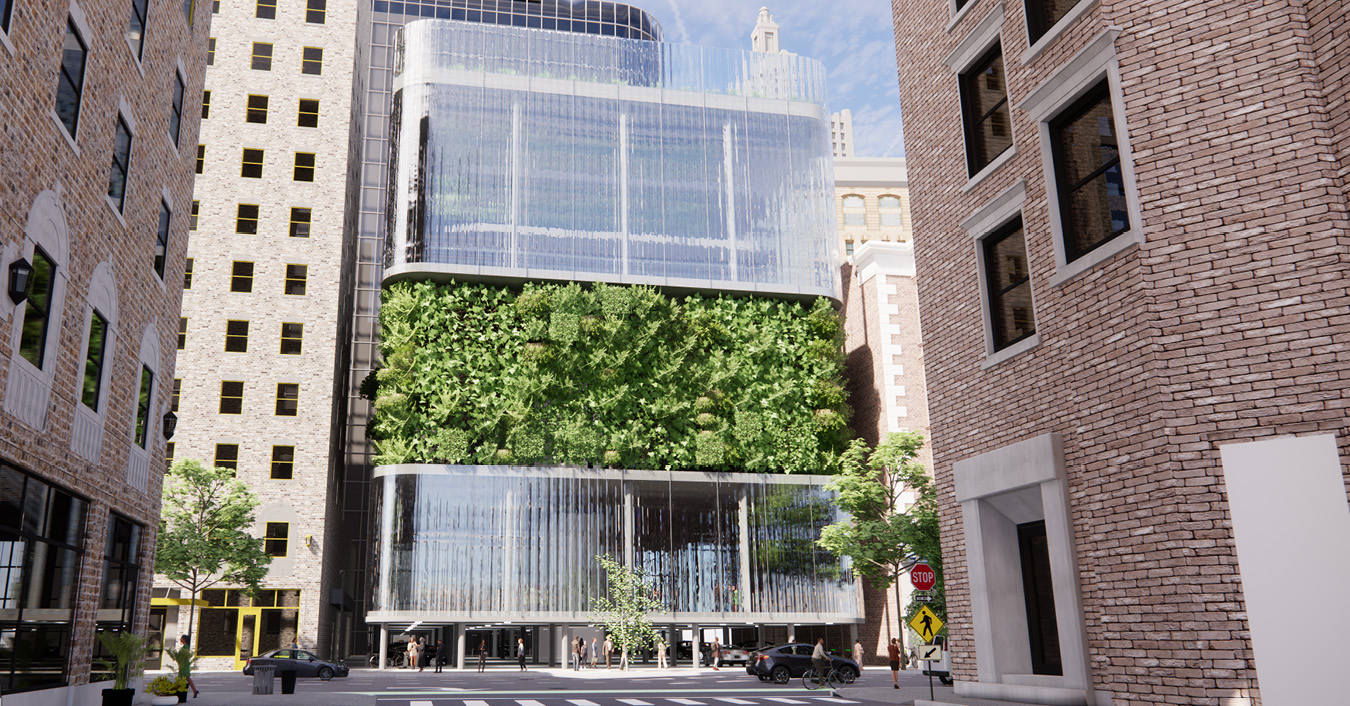Urban Resource House
Growth Tower
1/3 of the food produced for consumption in the world goes to waste; 15% of lung cancer cases across the globe are caused by air pollution, and world energy usage by 2050 will increase by 50%. The challenge is how do we supply resources to a densifying urban population without compromising the natural environment and resources? The Urban Resource House (URH) proposal would produce its own resources for a given radius of population. The URH would be interspersed across cities over unused lots to serve a specific radius of population.
The URH would consist of: A roof-garden for water retention and photovoltaics for energy consumption, rain-water chamber for plumbing and irrigation, hydroponic farming to supply the local context with produce, compost collection exchange system where local residents can drop off their leftover produce for a fiscal exchange, the compost would be used as “compost tea” to fertilize the hydroponic farm, an air purifier chamber with an exterior moss wall filter which would intake city air and filter through the moss wall and then further filter through a UV light and HEPA filter, this air would be pure enough to use inside for circulation and would purify city air once it has returned back to the atmosphere, a data and working center for people to use as a temporary workspace, and finally an existing parking space which would be preserved only for electric cars bicycles and other vehicles to charge and to further promote the use of non-polluting vehicles.
Awards + Publications
Shinkenchiku Residential Design Competition 2020 Winner
a+u 2021.01 (Architecture and Urbanism Magazine)
Shinkenchiku | 新建築 2021.01 (New Architecture Magazine)
What does the future hold?

Next Project
Rising with Rubble
The aftermath of the 2007-2010 Gaza war created an unforeseen precedent of residential construction particular to the Gaza Strip. Over 1000 buildings and over 1600 homes were destroyed; what was left throughout Gaza was mountainous ruins of concrete remnants, rubble, and rebar…
Contact us:
info@design-precedent.com
Design-
Precedent
© All rights reserved.


